For some time I’ve been meaning to post a link to the Empire Marketing Board Archive at Manchester Art Gallery.
It’s an exemplary online resource for a really interesting collection. The Empire Marketing Board was what Stephen Tallents did before he came to the GPO, and in many ways is one of the first attempts at the kind of ‘soft’ advertising and propaganda that we now take for granted.
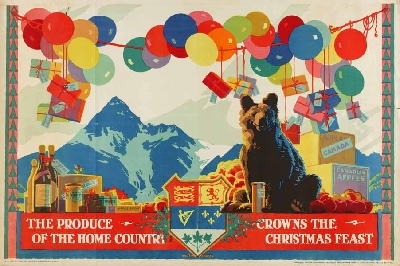
Austin Cooper, 1927
In his time at the Empire Marketing Board between 1926 and 1933, Tallents (working with Frank Pick and William Crawford of Crawfords advertising agency) commissioned some of the very best designers and artists working in Britain at the time. These included those such as Austin Cooper, Frank Newbould and Fred Taylor who were best known for their work for the railway companies,
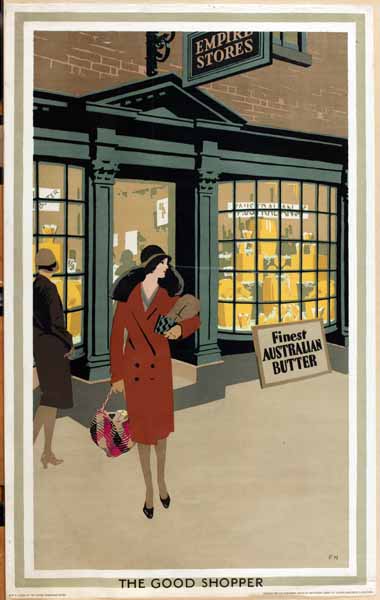
Frank Newbould
as well as fine artists like Paul Nash.
But I’ve been holding off writing about it for months. Why? Because these posters constitute an ideological problem of the first order, and it’s not one I have an easy answer to.
The issue at stake is, of course, Empire. The Manchester Art Gallery website describes the collection as ‘challenging and fascinating’.
Created during the 1920s and ’30s to promote trade and understanding between empire countries, the posters present a view of the British Empire that, from today’s perspective, is often uncomfortable. Although visually stunning, the posters contain images that would today be considered offensive. As a product of their time, they raise difficult questions about the legacy of empire.
I’m not proposing to get into a discussion about the legacy of Empire and the historic wrongs involved. What I’m interested in is how much ideology can adhere to images, in particular to these posters.
There is no denying that there are some posters in the collection which can only be interpreted as racism of the highest degree. This vision of the white man bringing civilisation is by Adrian Allinson.
It gets worse, too – the implicit comparison is with the companion poster.
But these posters are by no means in the majority in the archive. To start with, a good portion of the posters are images of either produce,
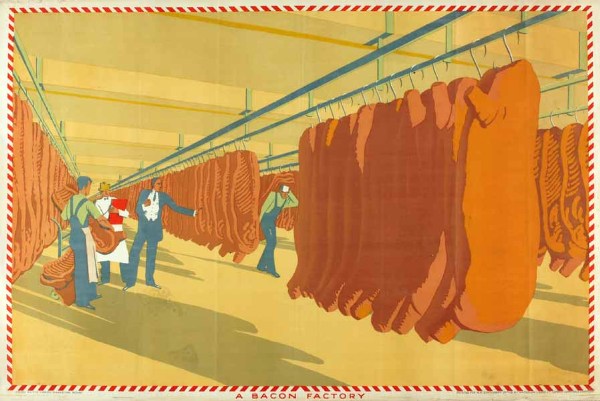
Anonymous
or pictures of Britain that wouldn’t look out of place on a railway poster.
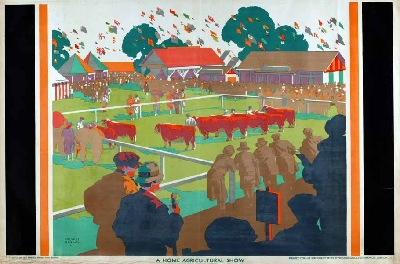
Gregory Brown
Or quite possibly both.
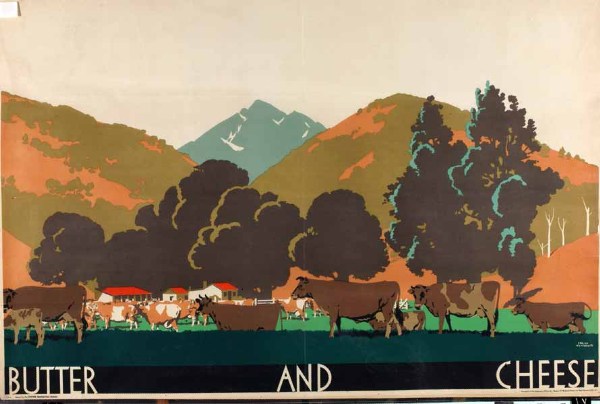
Frank Newbould
So my questi0n is, can a poster like this Fred Taylor of Market Day be interpreted as loaded, racist even?
I’ve had quite an interesting email conversation about this with Melanie Horton, the researcher who’s been working on the archive. She would argue that it is, that all the posters have to be seen as whole and cannot be separated from the politics of how they came to be produced.
I’m not going to tackle her arguments now as she has a booklet about the collection coming out soon (Empire Marketing Board Posters: Manchester Art Gallery ) and it only seems fair to read them in detail first. But I do have a few broader thoughts to raise before then.
Because what we are debating here isn’t in any way a new question. T.S. Eliot was undoubtedly a small-minded anti-semite, but does that devalue The Four Quartets, in which there is nothing of the sort? Or if you want a more modern version of the same problem, try yesterday’s Guardian, where Brett Easton Ellis is freely admitting to misogyny, sexism and generally being a rather unappealing bit of work. But what does that do to our opinion of his novels? As it happens, I love The Four Quartets but loathe American Psycho, so my answer is different in each case.
But this problem also came up when I studied Design History, in perhaps its most taxing presentation. Here it was known as the Volkswagen problem. And it is quite a problem.
The Volkswagen Beetle is a great piece of design which produced one of the most popular small cars of the twentieth century, and was also technologically very innovative. However it was also, and there is no too ways about this, a product of Nazi ideology. As if the name Volkswagen itself wasn’t enough of a clue, the Beetle was originally known as the KdFwagen – the Strength Through Joy car. Adolf Hitler commissioned it, approved it and set it into production. And yet we are not only prepared to forgive the Beetle, but clasp it to our hearts as one of the best-loved cars there has ever been.
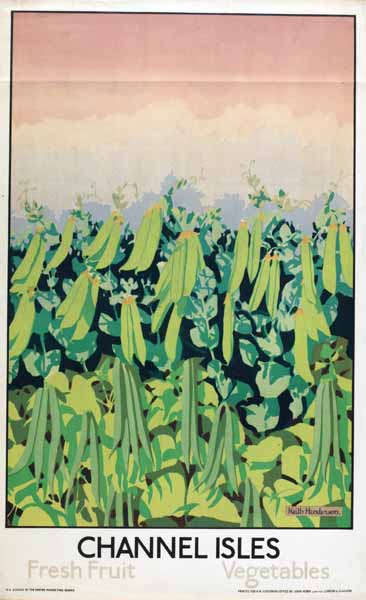
Keith Henderson
So where does that leave images like these?
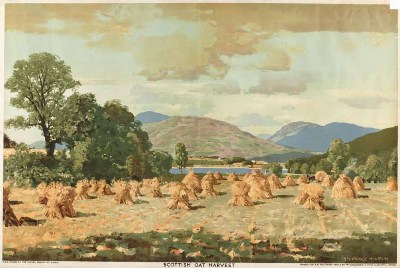
George Houston
Can we separate them out from how and when they were produced, and only see the oats and the peas and the pears?
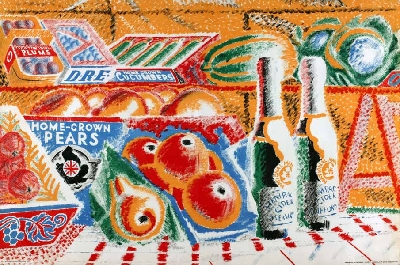
Anonymous
Or is it only the Volkswagen that can ever achieve that kind of forgiveness?
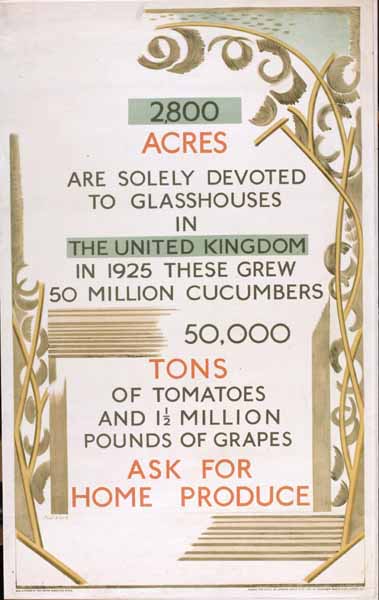
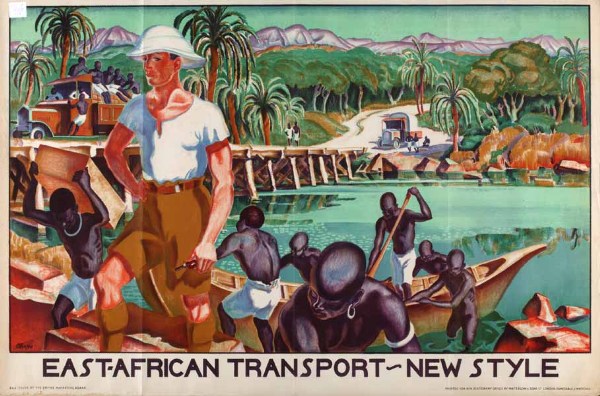
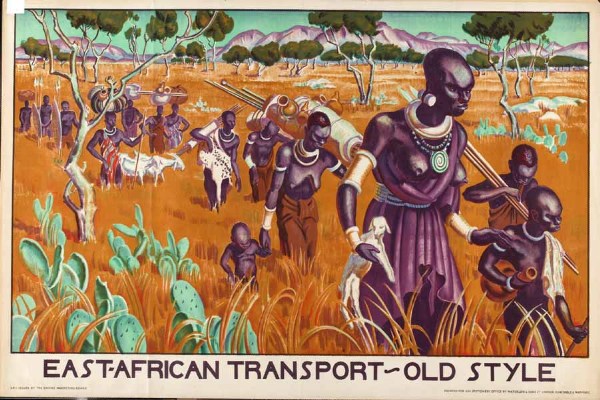
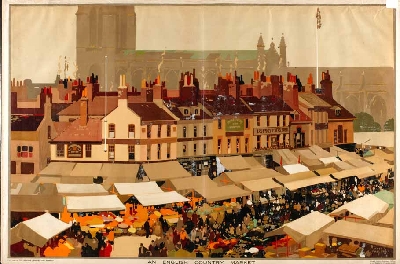
See also Wagner, Eric Gill, and this more contemporary story.
Artists interpret the world and life through their art. Sometimes that art can echo other interpretations, whether or not this was the artist’s intention. For me, the best response to these posters is not to ignore their historic context, but to both recognise that and then see beyond it to their intrinsic artistic value.
Funnily enough this reminds me of music. When you find out a musician you like has political views you don’t, it can be a struggle to still enjoy their music as much. Us design historians un-pick things until we find their provenance and sometimes have to then regret the unabashed, innocent joy we’d initially felt about them. But the stories are still fascinating. I think institutions have to see posters like these as a whole – a whole collection. But once they are let loose in the market, that context will have a knock-on effect on both their assigned aesthetic and fiscal values. It’s a hard one.
Thanks both of you for those – I am still very much in the process of working out what I think, so it’s really good to have some other opinions.
Yes, I’d forgotten Eric Gill in this rather less than illustrious pantheon – and the BBC story is a really interesting review of the area, albeit one that, like me, ends up throwing up its arms and not knowing the answer.
I’d like to say that there’s a distinction between art and design, in that design can often have a purpose or intention to persuade. But even that argument falls apart because some art may have a dubious moral motive as well. The BBC article draws the distinction between Gill’s Stations of the Cross and his nude drawings of his daughter. Equally, some design has no intention behind it either – it would seem absurd if the BBC stopped using Gill Sans because of what Eric got up to.
And I do agree that Manchester Art Gallery in particular has to see the collection as a whole, not least because they have a very difficult relation to it. Arguing the case of the EMB collection in a publicly funded gallery in a multicultural city would require more political nous than I could ever muster up.
But context is an odd and flexible thing, isn’t it. We’ve managed to detatch the VW Beetle entirely from its original context; I think if Fred Taylor’s Market Day came up at auction, it would probably manage the same trick too. But the African Transport pair just cannot exist outside of the circumstances in which they were created.
I’m not sure that’s cleared anything up though…
The EMB can, and often does, raise some interesting issues – when I worked in the museum sector we often had to wrestle with how to interpret objects and items that now have very different connotations without resorting to outright censorship. I recall the uproar we had not long ago about a charming Mabel Lucie Atwell poster for the District line that we were advised not to show as it contained a child with a doll that now has serious contemporary ramifications – were we right to pull it? Likewise I felt slightly ill at ease posting some 1930s German railway guides, some of whom were illustrated by artists who had serious Nazi connections. Anyhow, re; EMB – don’t forget the 1986 Stephen Constantine “Buy & Build” book that PRO/HMSO issued and that I was given as my christmas present from my Ma and Pa that year!
It is a minefield, isn’t it. I think that’s particularly so when you’re posting things on the internet, as with your German railway guides, when people can then take those images and do what they will with them. At least in a museum, objects can’t be removed from the context you give them.
And yes – I have a copy of that book on my desk right now, although I did have to buy it myself! He seems less worried about the collection than Manchester, and a bit more able to take it as a product of the times.